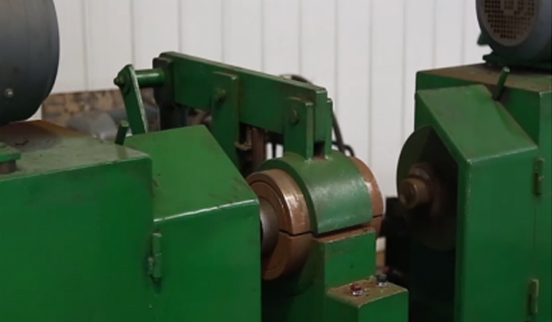 Afrikaans
Afrikaans  Albanian
Albanian  Amharic
Amharic  Arabic
Arabic  Armenian
Armenian  Azerbaijani
Azerbaijani  Basque
Basque  Belarusian
Belarusian  Bengali
Bengali  Bosnian
Bosnian  Bulgarian
Bulgarian  Catalan
Catalan  Cebuano
Cebuano  Corsican
Corsican  Croatian
Croatian  Czech
Czech  Danish
Danish  Dutch
Dutch  English
English  Esperanto
Esperanto  Estonian
Estonian  Finnish
Finnish  French
French  Frisian
Frisian  Galician
Galician  Georgian
Georgian  German
German  Greek
Greek  Gujarati
Gujarati  Haitian Creole
Haitian Creole  hausa
hausa  hawaiian
hawaiian  Hebrew
Hebrew  Hindi
Hindi  Miao
Miao  Hungarian
Hungarian  Icelandic
Icelandic  igbo
igbo  Indonesian
Indonesian  irish
irish  Italian
Italian  Japanese
Japanese  Javanese
Javanese  Kannada
Kannada  kazakh
kazakh  Khmer
Khmer  Rwandese
Rwandese  Korean
Korean  Kurdish
Kurdish  Kyrgyz
Kyrgyz  Lao
Lao  Latin
Latin  Latvian
Latvian  Lithuanian
Lithuanian  Luxembourgish
Luxembourgish  Macedonian
Macedonian  Malgashi
Malgashi  Malay
Malay  Malayalam
Malayalam  Maltese
Maltese  Maori
Maori  Marathi
Marathi  Mongolian
Mongolian  Myanmar
Myanmar  Nepali
Nepali  Norwegian
Norwegian  Norwegian
Norwegian  Occitan
Occitan  Pashto
Pashto  Persian
Persian  Polish
Polish  Portuguese
Portuguese  Punjabi
Punjabi  Romanian
Romanian  Russian
Russian  Samoan
Samoan  Scottish Gaelic
Scottish Gaelic  Serbian
Serbian  Sesotho
Sesotho  Shona
Shona  Sindhi
Sindhi  Sinhala
Sinhala  Slovak
Slovak  Slovenian
Slovenian  Somali
Somali  Spanish
Spanish  Sundanese
Sundanese  Swahili
Swahili  Swedish
Swedish  Tagalog
Tagalog  Tajik
Tajik  Tamil
Tamil  Tatar
Tatar  Telugu
Telugu  Thai
Thai  Turkish
Turkish  Turkmen
Turkmen  Ukrainian
Ukrainian  Urdu
Urdu  Uighur
Uighur  Uzbek
Uzbek  Vietnamese
Vietnamese  Welsh
Welsh  Bantu
Bantu  Yiddish
Yiddish  Yoruba
Yoruba  Zulu
Zulu tail drum pulley
Understanding Tail Drum Pulleys Key Components in Conveyor Systems
In industrial settings, efficient material handling is crucial for optimized operations. One of the unsung heroes of these systems is the tail drum pulley, an essential component found in many conveyor systems. This article explores the significance, design, functions, and maintenance of tail drum pulleys.
What is a Tail Drum Pulley?
A tail drum pulley, often known as the tail pulley or end pulley, is located at the end of a conveyor system. It is responsible for supporting the conveyor belt and providing a mechanism for the belt to return after carrying materials from the loading section. The design and functionality of the tail drum pulley ensure that the belt operates smoothly and efficiently, contributing to the overall performance of the conveyor system.
Key Functions
The primary functions of a tail drum pulley include
1. Belt Tensioning Tail drum pulleys play a crucial role in maintaining the proper tension in the conveyor belt. A well-tensioned belt minimizes slippage, which can lead to wear and inefficient material transport.
2. Support and Alignment The tail pulley supports the weight of the belt and the materials being transported. Proper alignment is essential to prevent undue stress on the belt, which could lead to premature failure.
3. Material Dispersion In some configurations, tail pulleys assist in the dispersion of materials at the end of the conveyor. This is particularly important in applications where materials must be spread evenly over a designated area.
4. Belt Return Mechanism After carrying materials, the conveyor belt needs to return to its origin. The tail drum pulley facilitates this return, ensuring that the belt remains in a continuous loop.
tail drum pulley

Design Considerations
The design of a tail drum pulley can vary based on factors such as the type of materials being transported, conveyor length, and load requirements. Generally, tail pulleys are constructed from durable materials such as steel, ensuring they can withstand the rigors of heavy-duty operations. Their diameter and width are critical to accommodate the specific belt type and load characteristics, and they are typically equipped with bearings to reduce friction during operation.
Maintenance Tips
To ensure the longevity and efficiency of a tail drum pulley, regular maintenance is necessary. Here are some crucial maintenance tips
1. Routine Inspections Regularly inspect the pulley for signs of wear, damage, or misalignment. Look for loose bolts or any abnormalities that could affect its performance.
2. Lubrication Bearings should be adequately lubricated to reduce friction and wear. Follow the manufacturer's guidelines for lubrication intervals and types of lubricant.
3. Alignment Checks Ensure that the tail drum pulley is aligned correctly with the belt. Misalignment can lead to accelerated wear on both the belt and the pulley.
4. Belt Tension Monitoring Monitor the tension of the conveyor belt regularly. Adjustments may be necessary to avoid slippage or over-tensioning, which can cause damage.
Conclusion
In conclusion, tail drum pulleys are vital components in the functioning of conveyor systems. Their role in maintaining belt tension, supporting material transport, and facilitating smooth operation underscores their importance in industrial settings. By understanding their functions and ensuring proper maintenance, businesses can enhance operational efficiency and minimize downtime, proving that sometimes, the most critical elements of a system operate behind the scenes.
-
Revolutionizing Conveyor Reliability with Advanced Rubber Lagging PulleysNewsJul.22,2025
-
Powering Precision and Durability with Expert Manufacturers of Conveyor ComponentsNewsJul.22,2025
-
Optimizing Conveyor Systems with Advanced Conveyor AccessoriesNewsJul.22,2025
-
Maximize Conveyor Efficiency with Quality Conveyor Idler PulleysNewsJul.22,2025
-
Future-Proof Your Conveyor System with High-Performance Polyurethane RollerNewsJul.22,2025
-
Driving Efficiency Forward with Quality Idlers and RollersNewsJul.22,2025





























